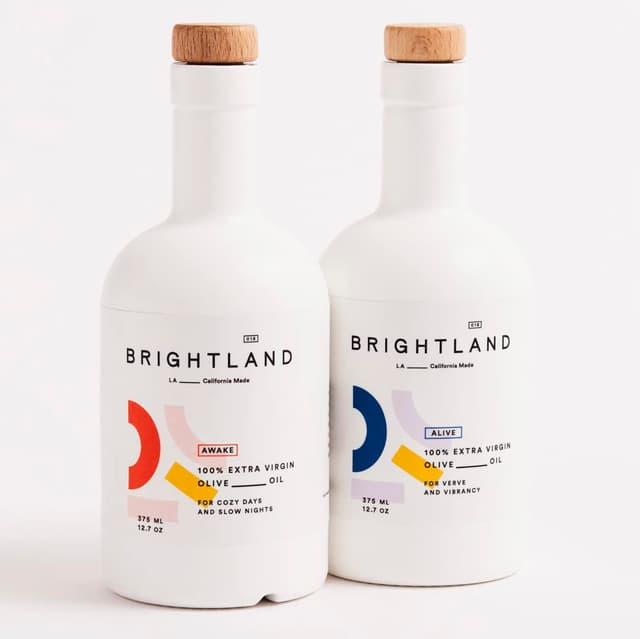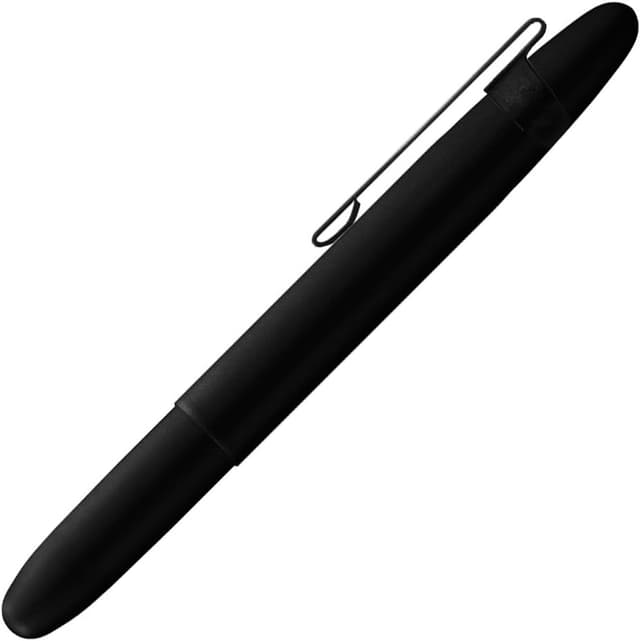Colin Nagy | June 28, 2019
Why is this interesting? - The Olive Oil Edition
On DTC, olive oil, and surprises
Recommended Products

A high-quality, sustainably made olive oil with unique packaging and branding, aiming to disrupt the traditional olive oil market.

A versatile, stylish pen that writes in almost all conditions, including outer space. Fits easily in a pocket and is perfect for those who enjoy jotting down notes by hand.
Colin here. As I mentioned in WITI 6/11 - The Tracksmith Edition, I feel like a lot of modern direct-to-consumer (DTC) brands are cynical and non-sustainable. With that said, capital keeps pouring into the space. According to a recent article in the Journal:
Venture-capital funds that usually focus on tech are pouring money into innovative kitchen and bathroom brands. In the first five months of 2019, 320 funds spent $2.3 billion backing consumer products in the U.S., Europe and Asia, according to PitchBook data. This puts the industry on course to exceed the record $4.3 billion it invested in the sector in 2018. Two-thirds of this year’s backers had the majority of their overall investments in tech.
All this cash means we will continue to see DTC entrants attempting to capture every supermarket aisle for the foreseeable future. If the past is any indication, most will be soulless attempts to reimagine a legacy category that may or may not need reimagining.
With my stance established, you can imagine my disdain when I saw a brand trying to disrupt the olive oil space. I was so primed to hate, but something about the execution made me want to give it a shot. So in the commerce equivalent of a hate-follow, I bought a few bottles. The result? I was blown away. A truly excellent, interesting product that stood out.
Why is this interesting?
Turns out olive oil is actually a perfect case study to execute the principles of DTC: strong branding, knowing your consumer inside and out, and finely honed brand, aesthetics, and touchpoints. Plus, it's a huge market.
I spoke to Aishwarya Iyer, who founded the very olive oil company that stoked my initial rage. It is called Brightland. Her thesis is straightforward: control the product quality, break the conventions and aesthetics (thus, no dark green bottles and classic labels), sell to consumers directly, and build the brand through partnerships.

One insight that jumped out to Iyer was the idea that no one really had any sort of affinity to their olive oil. It was a product lacking any loyalty. She told me via email:
After digging into consumption behavior and conducting a slew of consumer research, I was stunned to find that nearly 90% of consumers couldn’t name the olive oil brand they use at home, even though they were all using it on a regular basis - it’s olive oil...everyone has a bottle shoved away in their kitchen cabinets!
Design-wise: Very early on, I knew I wanted the notion of green to speak for the oil’s tasting notes/character rather than use it in our visual aesthetic, so that was a note that was passed to our design team - I also wanted to celebrate the other colors of produce like violet in purple cauliflower, tomato, the yellow of squash blossoms, and knew the brand would sit at the intersection of being bold, luxurious, California and New York.
So, making the bottle white, bright, aesthetically unique, and something that people would actively display, was the move. It caters to the world of ravenous Insta-fueled visual culture that, admittedly, probably repelled me from the start,
There’s also a tie-in to the increasingly refined and thoughtful dietary habits of her target audience as well. “It fits nearly every lifestyle: vegan, vegetarian, pescatarian, keto, paleo, Atkin’s, mediterranean,” she explained.
Most importantly, though, the product is really good (I’ve been using it for a few months now). So, all is not lost for folks seeking to reimagine a category. And sometimes, someone as jaded as I can be about brands can be pleasantly surprised. Turns out magic can still happen when people hit the perfect notes of an actual consumer insight, getting the aesthetics dialed, and making sure there’s a surging addressable market with a good story to be told. But these things, however basic they seem, don’t seem to be executed upon by the recent surge of opportunist brands, putting Brightland in an exciting and contrarian spot for now. And Aishwarya, if you’re reading, I am buying another three bottles. (CJN)
Recommendation of the day:
There’s something satisfying about writing with a good pen. The Fisher Space Pen fits easily in a pocket, has an iconic style, and writes everywhere. Highly recommended for those that like to dash off notes longhand. (CJN)
Quick Links:
Really interesting conversation between Charlie Warzel and Sarah Jeong from the New York Times about how YouTube sets its rules. (NRB)
Great deep dive on the Sumba foundation which trains kids from the Indonesian island for careers in hospitality. (CJN)
The NBA draft was last week. It decided where a whole bunch of young men were going to move to for the next few years. Kevin Arnovitz at ESPN has been railing against the unfairness of this for years. In his latest piece on the topic he offers some alternatives: “Imagine a system in which incoming rookies enjoyed the power to choose -- say unrestricted free agency. Critics contend that such a setup would concentrate the best young rookies on established and/or sexier franchises. But in a restrictive salary-cap system, a capped-out team doesn't have the resources to offer Williamson what he'd command in free agency. The Warriors would be every bit as hamstrung in pursuit of Williamson, Ja Morant or any other top-five pick as they are in chasing Kawhi Leonard and Kyrie Irving.” (NRB)
How 9 people built an illegal Airbnb empire in NYC. (CJN)
Thanks for reading,
Noah (NRB) & Colin (CJN)